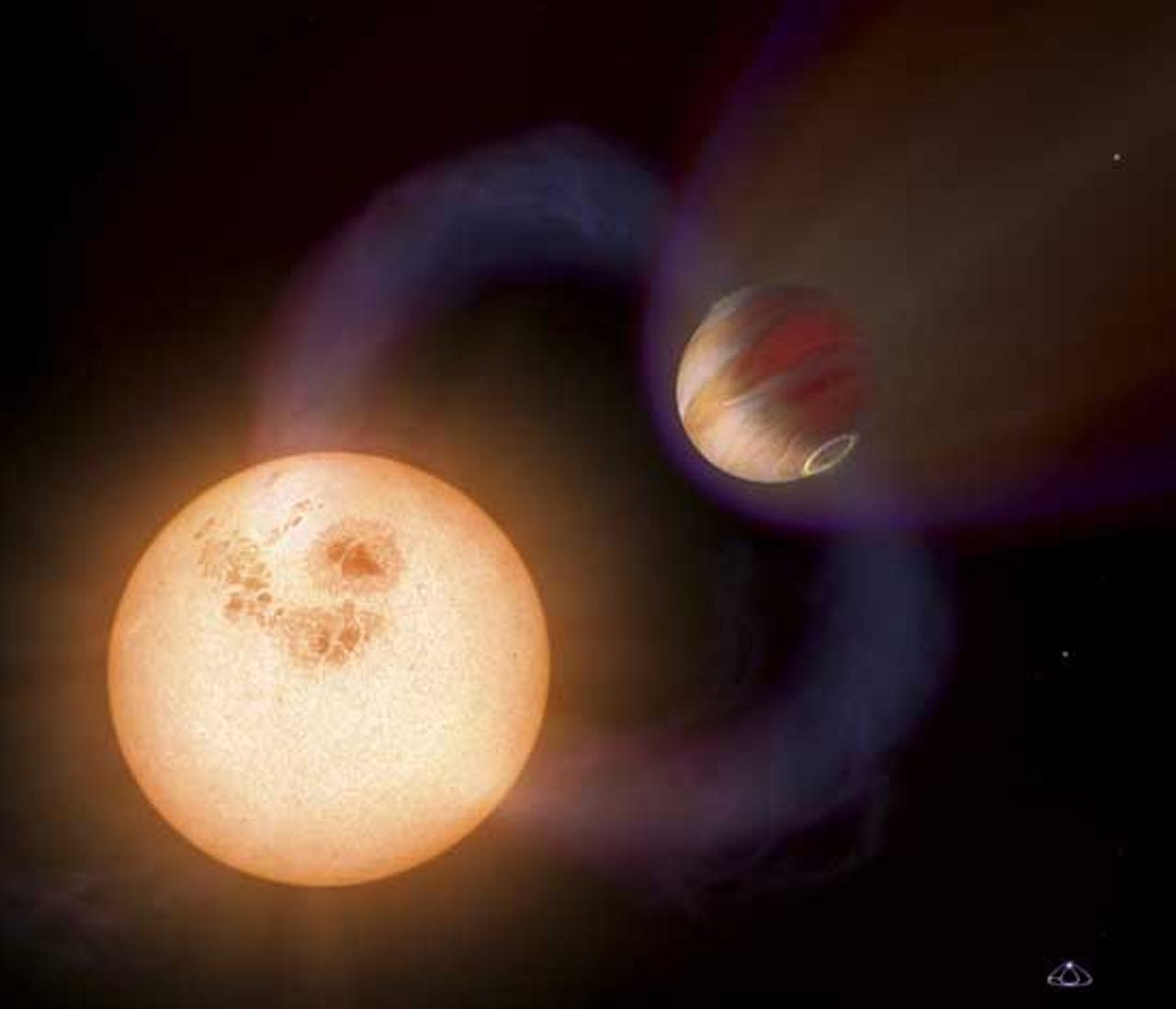Images: NASA hunts for a new Earth


Red-hot planet
The Sagittarius Window Eclipsing Extrasolar Planet Search (SWEEPS) project conducted by the Hubble Space Telescope recently found 16 new planets. This illustration shows what one of them may look like--a giant, Jupiter-sized exoplanet that orbits an unnamed red dwarf star.
This red-hot planet is just 750,000 miles from its star and orbits every 10.5 hours. Scientists speculate that a planet that large and close to a star could have a powerful magnetic field that would trap particles from the sun, creating auroral rings.
The latest findings brings the total of known planets outside our solar system to 199.
SWEEPS area
TV can have a sweeps period so why can't the Hubble Space Telescope? In this SWEEPS survey, the Hubble studied 180,000 stars in the crowded central bulge of the Milky Way galaxy 26,000 light-years away from Earth.
locations of newly found planets
The top image, which shows half of the surveyed area, displays nine different stars, circled in green, that contain planets. The planets were discovered as they blocked light when crossing in front of their sun.
The bottom image shows where astronomers were able to locate a planet due to the star's back and forth wobble caused by the planet's gravity.
Transit
This image shows a Jupiter-sized planet in transit across its home star. Telescopes on Earth can detect the planet by the amount of light it blocks from the star.
Sleuth
Last month, a new NASA "Sleuth" telescope, equipped with a 4-inch camera lens and a digital camera, discovered a planet 500 light years away from Earth. The planet will provide a target for further study by a Sleuth telescope as part of NASA's Kepler mission which is scheduled to launch in 2008. The mission is to study a single patch of sky for four years to detect planets and gain more information about them.
Sim PlanetQuest
NASA's Sim PlanetQuest is slated to identify nearby Earth-like planets that will be further examined by Terrestrial Planet Finder observatories to determine whether a planet is inhabitable or not. It is scheduled to launch within the next decade.
Terrestrial Planet Finders
The Terrestrial Planet Finder Coronagraph and the Terrestrial Planet Finder Interferometer will check the data from Sim PlantQuest and also try to find more new planets. Their instruments will determine whether light from a planet outside our solar system is similar to the light from Earth.
Upsilon Andromedae b
Left is an artist's conception of the Jupiter-like planet, Upsilon Andromedae b.
Transiting planet
How to detect a transiting planet.
Planet-finding projects
Here's a code to the colors which indicate the methods employed in each planet search:
Orange: Radial velocity (10)
Green: Planetary transit surveys (30)
Blue: Micro-licensing surveys (15)
Red: Imaging (6)
Yellow: Astronomy (18)